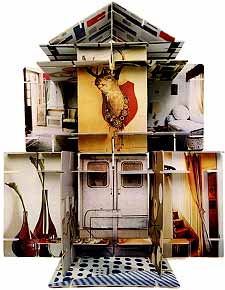
Good taste is easy to come by these days. It’s in scads of catalogues and chain stores, in cleverly knocked-off modernist furniture and tableware. And we’re not complaining: The democratization of design has been one of this aesthetic age’s more welcome developments.
But interesting taste is a different, often more interesting matter. And now—secure in the knowledge that the world gets good design—a group of people, both professionals and amateurs, are willing to push its boundaries. They’re not revolutionaries, but they do, in a way, represent a movement. They’re beating back generic palettes and safe prescriptions because they have no choice. They exhibit an innate attraction to unusual colors and objects, even to the point of putting dancing crocodiles in their front hall.
In this issue, we pay tribute to these new eccentrics—from the contractor who insisted on using subway doors in his apartment to the financial consultant whose own contractor looked at her choice of wallpaper and thought he was tripping.
No one should necessarily be able to live in these apartments but their owners. Still, if they inspire others, all the better. Consider these eccentrics design liberators—free of any interiority complexes. “People expect apartments to be very New York minimal,” says Tom Beebe, an editor who’s filled his with wicker and his brother’s picket fence.
And who knows how long it will be before the catalogues are filled with versions of their visions? Back in 1905, when Stanford White hired Elsie de Wolfe to decorate the Colony Club, it was her first major commission. Instead of sticking to the perceived good taste of the day—leftover trappings of Victorian décor heavy on bronze and marble—she horrified the ladies of the club by covering the tearoom with tiled floors and choosing azalea pink for the assembly area. As Jane S. Smith recalls in Elsie de Wolfe: A Life in the High Style, one member even called De Wolfe down from a stepladder: “ ‘Surely, surely,’ she pleaded, ‘you don’t mean these walls to be this dreadful color?’ ” She did, indeed. And we’re all the better for it.
